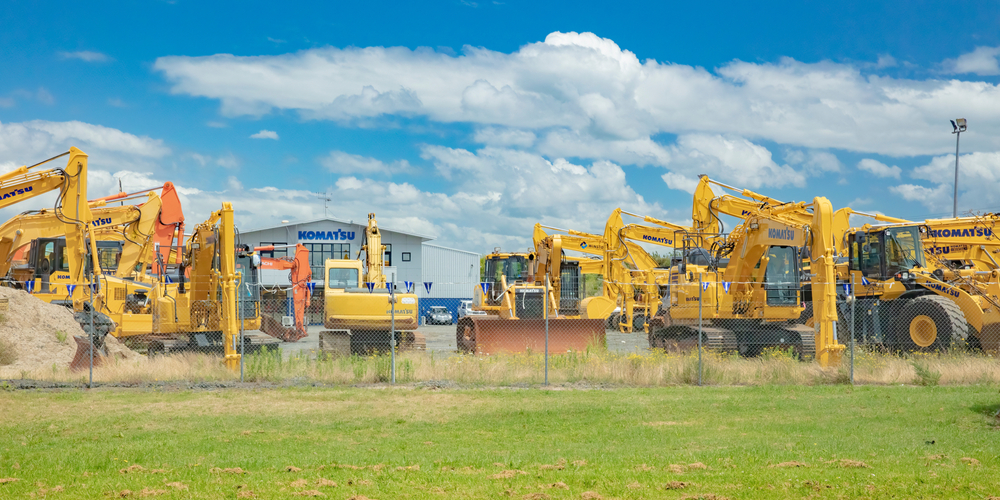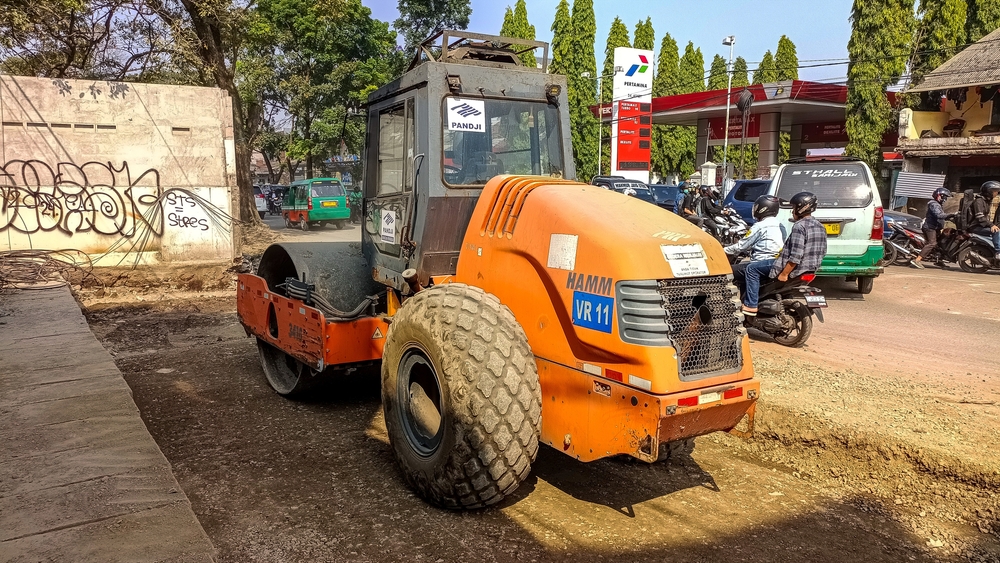A crane’s versatility and strength make it indispensable for lifting, moving, and placing heavy materials at heights and distances that would otherwise be unachievable. Our focus in this blog post zeroes in on the intricacies of crane equipment parts, delving into the types of cranes and their applications within the construction industry and beyond. By exploring the essential components, various configurations, and the diverse roles cranes play on job sites, we aim to enhance your understanding and appreciation of this critical machinery.
Understanding Crane Equipment Parts
[h3] Crane Anatomy Overview
Cranes are complex machines made up of many different parts, each with its own important role. Some of the main components include:
- Boom: This is the long, telescopic or fixed arm that extends from the crane, used for lifting the load. It’s the most visible part of the crane and can vary in length.
- Hook: Attached to the end of the boom, the hook is what actually lifts the load. It can move up and down and sometimes rotate.
- Counterweights: These are weights placed on the back of the crane to balance the load being lifted. They prevent the crane from tipping over.
- Jib: A jib is an extension of the boom that allows the crane to reach further. Not all cranes have a jib, but it’s a useful feature for increasing the crane’s range.
- Outriggers: These are extendable legs that spread out from the base of the crane to stabilize it during operation.
Imagine a tall tower with a long arm reaching out from the top. At the end of the arm, there’s a hook that goes up and down, lifting things. The tower stands firm on legs that spread out wide, and at the back, there’s a heavy weight keeping everything balanced. This is basically what a crane looks like.
Essential Crane Components
- Hoist: The hoist is the muscle of the crane, pulling the rope or chain that lifts the hook and the load attached to it. It’s powered by motors and can lift heavy weights to great heights.
- Trolley: Found on some types of cranes, the trolley moves along the boom or jib, carrying the hoist and hook with it. This allows the load to be moved back and forth along the length of the boom or jib.
- Load Block: This is the assembly that includes the hook, the pulleys, and the ropes or chains attached to the hoist. It’s the part that directly interacts with the load, making it crucial for lifting operations.
These components work together like a team. The hoist provides the power to lift, the trolley positions the load, and the load block makes sure the lifting is smooth and secure.
Materials and Manufacturing
The strength and safety of a crane depend a lot on what it’s made of and how it’s put together. Most crane parts are made from steel or aluminum because these materials are strong and can handle a lot of weight. The quality of these materials is super important. If the materials aren’t good, the crane could break and cause accidents.
Crane manufacturers follow strict standards and get certifications to make sure their cranes are safe and reliable. These standards cover everything from the materials used to how the cranes are designed and built. Using high-quality materials and following these standards help ensure that cranes can do their jobs safely for many years.
Types of Crane Equipment
Mobile Cranes
Mobile cranes are the go-to choice for projects requiring high flexibility and mobility. They come mounted on trucks or wheels, making it easy to move them from one site to another or within a large construction site. Mobile cranes are ideal for lifting materials in various environments, from city construction sites to remote oil fields. The parts of mobile cranes, such as the hydraulic telescopic boom, outriggers for stabilization, and a compact base, are designed to support their mobility needs. These cranes can quickly be set up for a lift and then moved out of the way, making them highly efficient for projects with tight timelines.
Tower Cranes
Tower cranes stand tall above city skylines, primarily used in the construction of high-rise buildings. Their design includes a vertical mast (the tower) and a working jib that extends horizontally from the mast, allowing them to lift materials to significant heights. The turntable part of a tower crane allows it to rotate a full 360 degrees, offering wide coverage of the construction site from a fixed position. Specific parts like the counter-jib balance the crane’s load, and the anchor bolts secure the crane to the ground or a building structure, ensuring stability and safety while operating at great heights.
Crawler Cranes
Crawler cranes are known for their robust tracks, or crawlers, which provide stability and mobility on soft, uneven, or rugged terrains where wheeled vehicles might struggle. These cranes are typically used in large-scale construction projects, such as bridge building and heavy lifting operations, where their ability to move with heavy loads is crucial. The crawlers distribute the crane’s weight over a large area, reducing ground pressure and enhancing stability. This feature, combined with a powerful lifting capacity and the ability to move around a site with a load, makes crawler cranes indispensable for projects with challenging terrain.
Overhead Cranes
Overhead cranes, also known as bridge cranes, are a staple in manufacturing and industrial facilities. They consist of a hoist that travels along a bridge between parallel runways. Overhead cranes are used to move heavy or bulky loads across a factory or warehouse space, efficiently transporting materials from one point to another overhead, minimizing the need for floor space. Key parts of an overhead crane include the bridge structure that spans the workspace, the trolley and hoist mechanism that moves along the bridge, and the end trucks that travel along the runways. These components work together to provide a smooth and efficient way to lift and transport materials within a confined or cluttered industrial environment.
Applications of Crane Equipment Parts
Construction Industry
From laying the foundation of a building to installing the rooftop, various crane parts are engaged to ensure efficiency and safety. For instance, the boom and jib are crucial for reaching high elevations, while the hook and load block handle the lifting and precise placement of materials. In constructing a high-rise, the tower crane’s mast and turntable allow for the crane to cover a wide area and lift materials to great heights. Mobile cranes, with their outriggers and telescopic booms, are often seen transporting materials across the construction site, showcasing the versatility and indispensability of crane equipment in the construction sector.
Manufacturing and Heavy Industries
Overhead cranes, with their bridges, trolleys, and hoists, are commonly used in factories and warehouses to transport heavy items along the production line or store them in inventory. The efficiency of these cranes significantly reduces the manual labor required, speeding up production processes and enhancing workplace safety. In steel mills and automobile manufacturing plants, high-capacity overhead cranes lift and move heavy steel plates or vehicle parts, demonstrating how specific crane parts support the operational needs of heavy industries.
Infrastructure Development
Crawler cranes, with their tracks and powerful lifting capabilities, are often employed in these projects for their ability to operate on uneven terrain and lift heavy construction materials. The crane’s boom, counterweights, and jib work together to provide the stability and reach needed to construct large structures. Additionally, mobile cranes play a key role in transporting materials across project sites, highlighting the critical function of crane parts in the development of infrastructure that supports communities and economies worldwide.
For professionals in the construction industry and related sectors, a deep understanding of crane equipment parts is not just beneficial—it’s essential. This knowledge not only enhances the operational efficiency of projects but also contributes to a safer work environment by ensuring cranes are used and maintained correctly.
As you move forward with your projects, we encourage you to explore our comprehensive solutions for all your crane equipment needs. With our expertise and wide range of equipment options, we are committed to supporting your operations with high-quality solutions that meet the unique demands of your work. Whether you’re in need of specific crane parts, looking for advice on the best equipment for your project, or seeking reliable maintenance services, ESP Ltd is here to help you achieve success with every lift.









